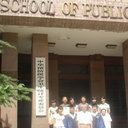Ptpn11 deletion in a novel progenitor causes metachondromatosis by inducing hedgehog signalling.
Mots clés
Abstrait
The tyrosine phosphatase SHP2, encoded by PTPN11, is required for the survival, proliferation and differentiation of various cell types. Germline activating mutations in PTPN11 cause Noonan syndrome, whereas somatic PTPN11 mutations cause childhood myeloproliferative disease and contribute to some solid tumours. Recently, heterozygous inactivating mutations in PTPN11 were found in metachondromatosis, a rare inherited disorder featuring multiple exostoses, enchondromas, joint destruction and bony deformities. The detailed pathogenesis of this disorder has remained unclear. Here we use a conditional knockout (floxed) Ptpn11 allele (Ptpn11(fl)) and Cre recombinase transgenic mice to delete Ptpn11 specifically in monocytes, macrophages and osteoclasts (lysozyme M-Cre; LysMCre) or in cathepsin K (Ctsk)-expressing cells, previously thought to be osteoclasts. LysMCre;Ptpn11(fl/fl) mice had mild osteopetrosis. Notably, however, CtskCre;Ptpn11(fl/fl) mice developed features very similar to metachondromatosis. Lineage tracing revealed a novel population of CtskCre-expressing cells in the perichondrial groove of Ranvier that display markers and functional properties consistent with mesenchymal progenitors. Chondroid neoplasms arise from these cells and show decreased extracellular signal-regulated kinase (ERK) pathway activation, increased Indian hedgehog (Ihh) and parathyroid hormone-related protein (Pthrp, also known as Pthlh) expression and excessive proliferation. Shp2-deficient chondroprogenitors had decreased fibroblast growth factor-evoked ERK activation and enhanced Ihh and Pthrp expression, whereas fibroblast growth factor receptor (FGFR) or mitogen-activated protein kinase kinase (MEK) inhibitor treatment of chondroid cells increased Ihh and Pthrp expression. Importantly, smoothened inhibitor treatment ameliorated metachondromatosis features in CtskCre;Ptpn11(fl/fl) mice. Thus, in contrast to its pro-oncogenic role in haematopoietic and epithelial cells, Ptpn11 is a tumour suppressor in cartilage, acting through a FGFR/MEK/ERK-dependent pathway in a novel progenitor cell population to prevent excessive Ihh production.




